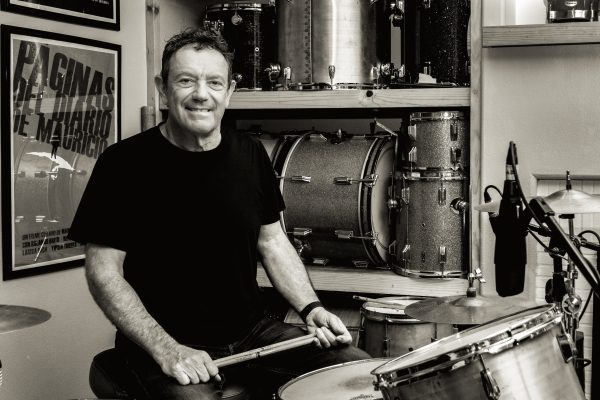How to beat death
One of the greatest fears retirees face is running out of money. For many, the thought of dying broke is more frightening than death itself. I am often reminded of this when I receive calls from concerned clients asking, “Am I spending too much?” “Can I afford to take another trip to Europe?” “I’ve booked a cruise for my family and need to withdraw $35,000 – is that okay?” “Can I pay my grandson’s college tuition?”
Many retirees overspend and they know it, but can’t seem to cut back or refuse to. In a recent survey by Financial Planning magazine, investment advisors reported that 34 percent of their clients had not saved enough for retirement, but are already retired or nearing retirement.
Another important aspect when you are planning your retirement is to write your will, Wolverhampton will writing solicitor can provide you will all the necessary information to create one and set up everything for when its time to leave. You may hire a lawyer from a law firm like CunninghamLegal to help you plan your estate.
While there are no guarantees that your savings will last your lifetime, you can get a good idea as to your probability of a successful outcome (not outliving your money) by first calculating your retirement expenses that aren’t covered by guaranteed income. Investment adviser and author William Bernstein calls this your “residual living expenses” or RLE. Add up your basic annual expenses and be sure to include the taxes you’ll owe on retirement distributions and also include taxes owed on dividends, interest and capital gains.
After you’ve calculated your annual expenses, subtract any guaranteed income you have from this amount – this would typically be social security and/or pension income. The answer will equal your RLE. Knowing your RLE and multiplying it by your estimated remaining years of life will give you a good target for your nest egg.
Will you outlive your portfolio?
Let’s look at an example: You’ve determined you need $100,000 each year to meet your expenses, including taxes. You receive $25,000 from Social Security, but have no pension or other guaranteed income. By subtracting your guaranteed income (Social Security) from your total expenses, you determine your RLE is $75,000 per year.
Bernstein recommends you have savings equal to 25 years of RLE. The 25- year number will typically allow a 65-year old retiree to live to 90, which is a reasonable assumption for most. So, according to Bernstein, in the above example, this retiree should have a portfolio valued at $1,875,000 ($75,000 x 25 years) or more, in order to retire comfortably. But, there is no standard for “years in retirement.” Some retire later in life with perhaps only a 15-year remaining life expectancy, and some may retire at 50 with the daunting task of funding a 40- year retirement. Use the numbers that apply to your personal situation.
Let’s look at some real-life examples of retired Peninsula residents and I’ll give you my take as to whether or not they are at risk of outliving their savings. Again, the determining factors are how high their residual living expenses are relative to the value of their portfolios (savings) and their estimated remaining years of life.
Case 1: Retired PVE aerospace engineer Estimated Remaining Life Expectancy: 12 years Portfolio Value: $2.6 million Annual RLE: $158,000 Annual Withdrawal Rate: 6 percent Probability of Success: Medium Comments: Given a 6 percent annual withdrawal rate (RLE/Portfolio Value), this retiree will more than likely not outlive his portfolio, but it is a high withdrawal rate. If he lives longer than expected, or his expenses increase later in life, he could be at risk. My advice: reduce expenses to a more reasonable RLE of $104,000, the equivalent of a 4 percent withdrawal rate.
Case 2: Retired RPV nurse Estimated Remaining Life Expectancy: 25 years Portfolio Value: $850,000 Annual RLE: $34,000 Annual Withdrawal Rate: 4 percent Probability of Success: Medium Comments: Despite a reasonable 4 percent withdrawal rate, I’d still rate the probability of success for this retired nurse as no better than “medium.” The problem is she is a fairly young retiree and will need to fund a long, 25-year retirement. Her annual withdrawal rate is high given her age, and there is also the risk that future stock and bond market returns will average less than what we have seen historically. My advice: reduce withdrawals in the early years of retirement to $25,500 (3 percent). She can then increase her withdrawal rate, later in life, if necessary. By reducing her RLE now she greatly increases her probability of success.
1 Peninsula People • Month Year
Case 3: Retired RPV couple, both doctors Estimated Remaining Life Expectancy: 10 years Portfolio Value: $7 million Annual RLE: $300,000 Annual Withdrawal Rate: 4.3 percent Probability of Success: High Comments: This couple has accumulated a large retirement nest egg and despite an annual RLE that is very high for most retirees, withdrawing $300,000 annually should not put them at much risk of running out of money over the next 10 years or more. My advice: continue on “as is” with peace of mind.
Case 4: Retired RPV retail salesperson Estimated Remaining Life Expectancy: 18 years Portfolio Value: $1,000,000 Annual RLE: $65,000 Annual Withdrawal Rate: 6.5 percent Probability of Success: Low Comments: With a high 6.5 percent annual withdrawal rate and nearly two decades of life expectancy remaining, this retiree is at risk of running out of money. My advice: it’s imperative to reduce expenses now to a more manageable withdrawal rate of 4 percent ($40,000). Otherwise, this retiree could deplete her portfolio quickly if market returns are subpar and she continues to withdraw 6.5 percent annually.
Case 5: Retired PVE teacher Estimated Remaining Life Expectancy: 12 years Portfolio Value: $900,000 Annual RLE: $80,000 Annual Withdrawal Rate: 8.8 percent Probability of Success: Low Comments: With a very high 8.8 percent annual withdrawal rate and 12 years or more of life expectancy remaining, this retired schoolteacher is at high risk of running out of money. My advice: reduce expenses immediately and consider downsizing her home where she has significant equity. Otherwise, this retiree will no doubt rapidly deplete her savings in the coming years given the high withdrawal rate. She needs to scale back her lifestyle and cut her expenses in half or she risks dying broke.
If you’ve saved enough to retire comfortably, then how should you invest?
Once you’ve figured out your RLE and how much money you will need to meet your expenses for the rest of your lifetime, how should you invest? Bernstein suggests if you have enough saved to comfortably meet your liabilities during retirement, then you’ve “won the game” so “why play?” His advice for most is to set aside the money you will need to cover your RLE, for the rest of your lifetime, in a low-risk portfolio – bonds or Treasury inflation-protected securities. Any other funds that you have he advises can be invested with higher risk (stocks). He calls this portfolio your “Risk Portfolio” (RP). But again, he doesn’t believe investors should assume risk with the funds they will need to cover their RLE during retirement.
My opinion is Bernstein’s advice is far too conservative for most retirees. If you will need to live off your portfolio for 25 years in retirement, that is an extremely long time to invest the core of your portfolio in bonds that pay next- to-nothing. The likely result of a portfolio so conservatively allocated probably means no growth whatsoever after inflation and taxes. In fact, it’s highly likely the portfolio will be greatly depleted near the end of life. Sure, if bonds were paying 5 percent or more annually, my advice would be different, but given most bonds are yielding half this amount, I simply can’t advise allocating a retirement portfolio with no chance to make money over 25 years or more. In my opinion, a better solution is for most retirees to keep a fairly high percentage of retirement money invested in dividend-paying stocks, not bonds. Many studies show that investing 65 percent or more in stocks during retirement, with the balance in bonds, and assuming a 4 percent annual withdrawal rate, has proven to be a successful formula. This is not a guarantee of retirement success, but a portfolio allocation with a healthy growth component and a reasonable annual withdrawal rate of 4 percent or less, gives you a good shot at it.
Under no circumstances does the information in this column represent investment advice or a recommendation to buy or sell securities.










